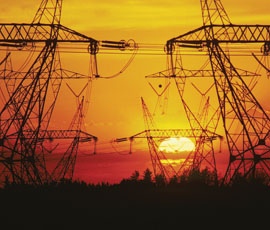Secure grid access for renewable projects

Farmers are being urged to secure grid access before proceeding with renewable energy projects.
Renewables adviser Gareth Lay, from property consultant Bruton Knowles, said many renewable projects had already been stopped in their tracks due to a lack of capacity in the grid.
This problem is particularly evident in the South West, where competition for connecting medium- and large-scale projects is more evident due to a large capacity of the grid already being taken up by wind, solar PV and hydro schemes, he said.
“It is becoming more and more common that we are finding perfect sites for solar farms occupying 25 acres or more, which tick all of the boxes in terms of planning and site suitability, but are being rejected late in the day due to the number of other schemes booking the capacity in the grid,” added Mr Lay.
He advised farmers to book their capacity at an early stage, rather than assuming that because good network coverage already exists, the scheme will go ahead.
“The network was never designed for multiple small- and medium-scale inputs throughout the system. Instead, the lines and substations are designed for large single-input power supplies from power stations.”
| Tips for securing grid capacity |
|---|
|
For more on this topic
See our renewables page
